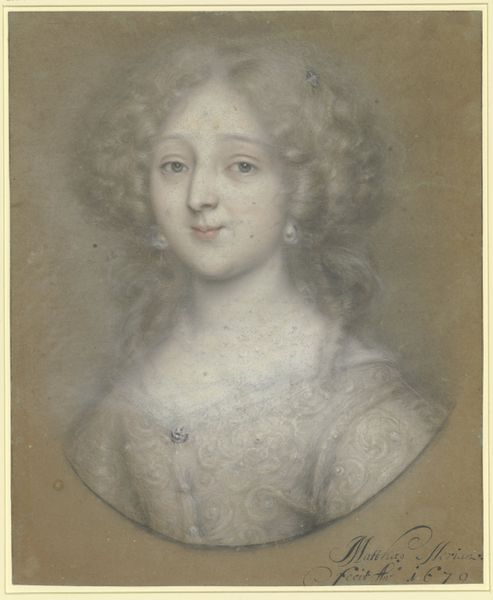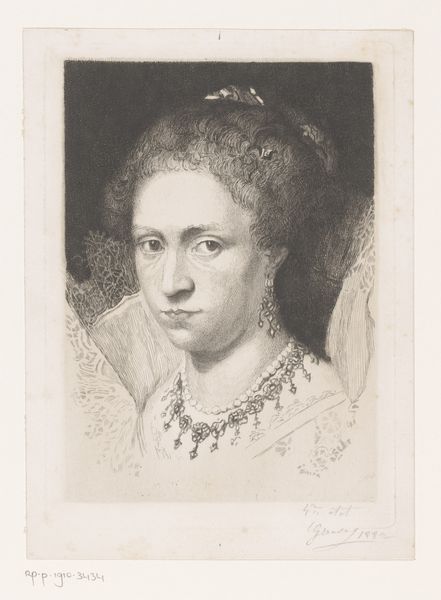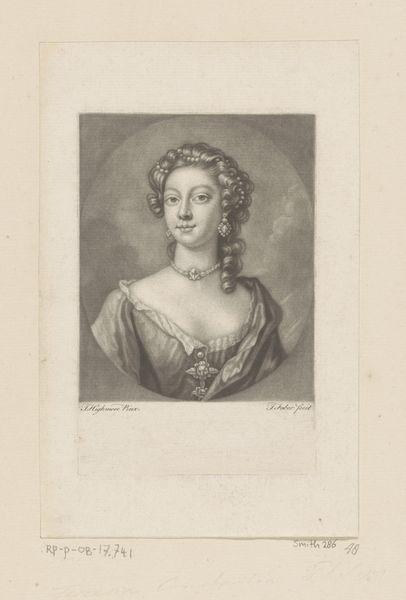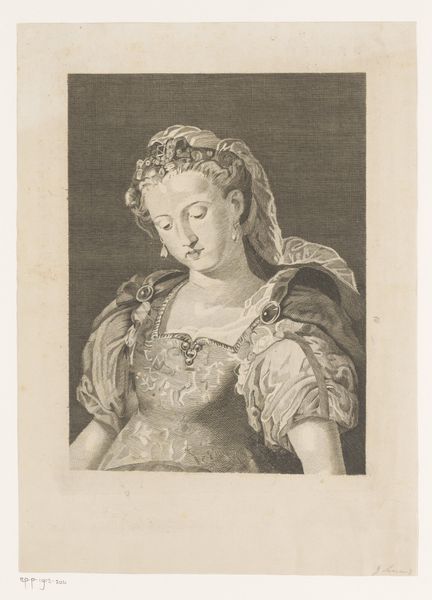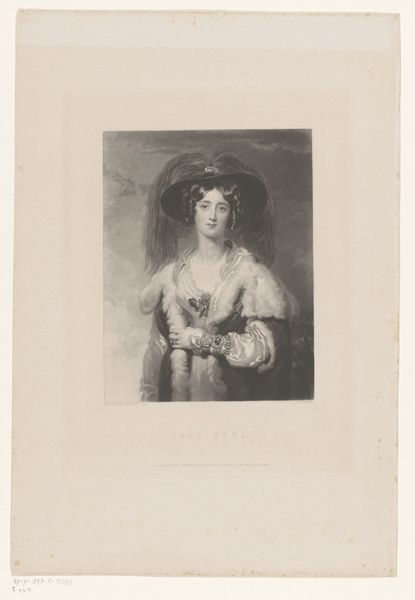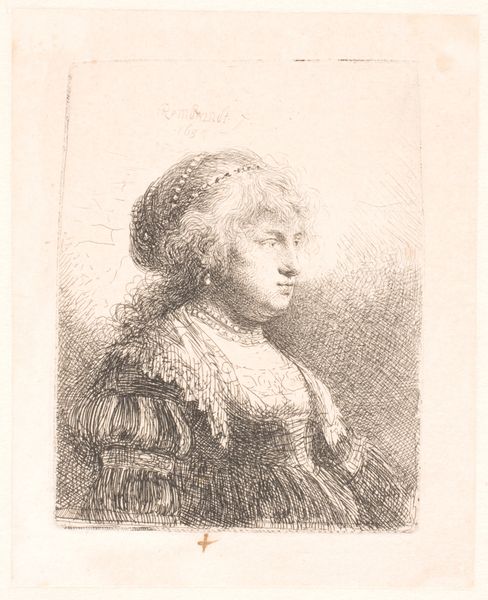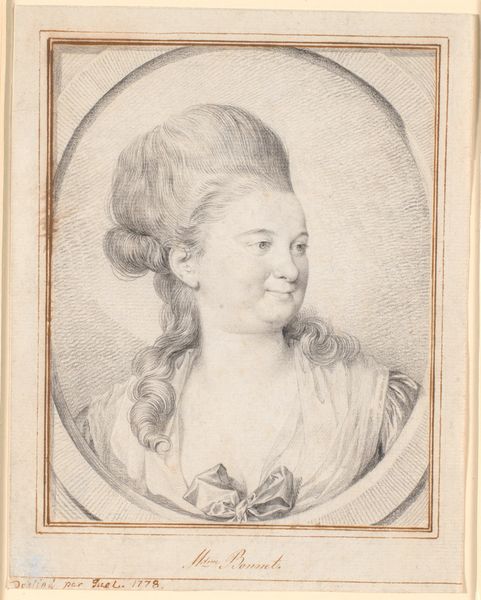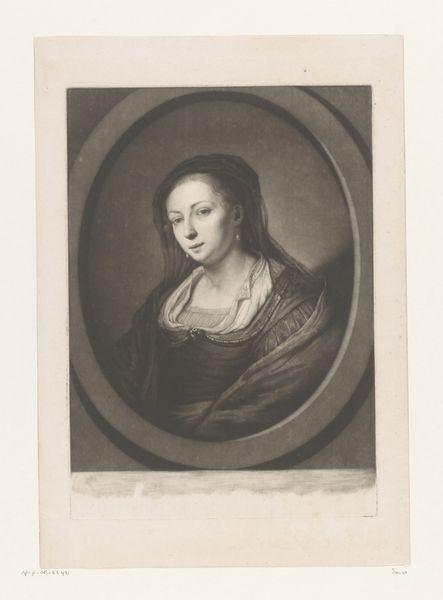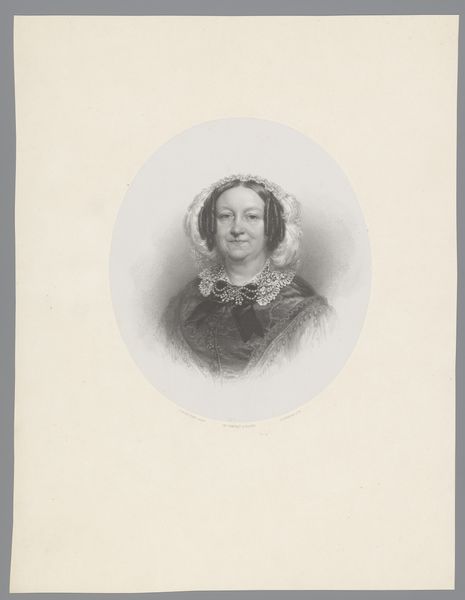
Fotoreproductie van tekening door professor Schurig naar een portret van Saskia van Uylenburgh door Rembrandt c. 1880 - 1890
0:00
0:00
drawing, print, daguerreotype, photography
#
portrait
#
drawing
# print
#
daguerreotype
#
photography
#
coloured pencil
#
realism
Dimensions: height 142 mm, width 94 mm
Copyright: Rijks Museum: Open Domain
Curator: This daguerreotype is entitled “Fotoreproductie van tekening door professor Schurig naar een portret van Saskia van Uylenburgh door Rembrandt." It was created around 1880-1890 by F. & O. Brockmann and is currently held here at the Rijksmuseum. What are your initial thoughts? Editor: Well, it's incredibly soft. Like a faded memory clinging to the surface. The woman seems both present and distant, a little ghostly, floating in time. Curator: Indeed. Consider how the reproductive technology of photography here mediates our access to Saskia, Rembrandt’s wife. We're not even viewing Rembrandt's original artwork directly, but rather a photograph of a drawing made by Professor Schurig after that portrait. The layers of representation are fascinating! Editor: It's like whispers within whispers. It also makes me wonder, who was Professor Schurig? Why did they choose to make a drawing of Rembrandt's portrait? There is some obsession in rendering art through other media. Curator: It’s a point well taken, and gets to questions about appropriation and the rise of art photography as a means to distribute famous images to a wider public. In that regard, it's a pretty radical act, democratizing art, in a way, by removing the constraints of accessing originals. Editor: Right! I suppose I feel a tinge of sadness looking at it. Like the very act of reproduction dilutes something vital of her original essence as painted by Rembrandt. Perhaps this sadness emanates not from her at all, but the reality of art divorced from context, reproduced endlessly. Curator: That’s an insightful interpretation. This sadness could indeed stem from recognizing the inherent limitations of reproduction. How photography can flatten historical context. Editor: Absolutely. It’s a portrait of a portrait of a person. Each layer seems to abstract us further from the core experience. What remains is a spectral longing, haunting yet lovely. Curator: It encourages us to critically examine the chain of representations and the social dynamics inherent within art dissemination and our engagement with the past. Editor: A lovely, ghostly dialogue indeed. It does leave me with more questions than answers, and that, perhaps, is the real treasure here.
Comments
No comments
Be the first to comment and join the conversation on the ultimate creative platform.
